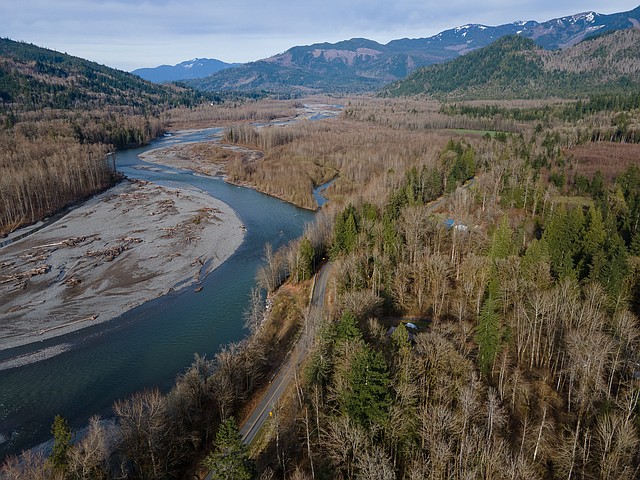While the public and bureaucratic focus in recent years has been on the formidable magnitude 9.0 earthquake that will one day strike the West Coast, it’s not the only earth-shaking disaster that could befall Whatcom and Skagit counties.
Nor is it guaranteed to be the most dangerous, said John Gargett, deputy director of the Whatcom County Sheriff’s Office Division of Emergency Management. The bottom line, he said, is to be prepared for disaster.
The shaking and tsunami caused by a magnitude 9.0 rupture of the Cascadia Subduction Zone would be most devastating for the 70,000 residents who live in Washington’s coastal communities. But Whatcom and Skagit counties, because of their distance from the fault and protected shorelines, would most likely be spared severe inundation and ground movement.
“We don’t consider the Cascadia event to be the event of most concern for Whatcom County,” Gargett said.
Subduction zones, such as the Cascadia zone, cause the largest, deepest quakes — above magnitude 8.0 — but shallow faults, though their ruptures are not as powerful, can be just as damaging because of their nearness to the surface.
Dozens of active faults crisscross Washington, earning the state the second-highest earthquake risk in the country. Whatcom and Skagit counties are home to numerous shallow, or crustal, faults, that could produce extensive local damage should they rupture.
The 31-mile long Devils Mountain fault in Skagit County stretches from Darrington to Mount Vernon. Devils Mountain could produce a magnitude 7.1 earthquake, according to a Department of Natural Resources model, that could injure more than 600 people and cause $2.3 billion in economic losses across 15 counties.
The Boulder Creek fault, located in Whatcom County near Maple Falls, is capable of generating a magnitude 6.8 quake along its 11-mile length. A DNR model indicates that damages from an earthquake of this magnitude could injure more than a dozen people and cause $113.5 million in economic losses throughout Whatcom and Skagit counties.
Gargett said quakes at crustal faults or at the Cascadia zone, which lies about 70 miles off the coast, have the potential in the region to disrupt transportation, cut off power and water supplies and cause liquefaction — when solid land behaves as a liquid.
But earthquakes, by nature, are unpredictable, Gargett said. That’s why it’s important to be prepared for any seismic event, whether it be a Cascadia zone rupture or a quake at a nearby fault, he said.
 A magnitude 1.5 earthquake was recorded Jan. 24 near the Nooksack River where Highway 542 meets State Route 9, according to the Washington State Department of Natural Resources. Numerous earthquakes strike the area each year, but most are too small to cause perceptible shaking. (Hailey Hoffman/Cascadia Daily News)
A magnitude 1.5 earthquake was recorded Jan. 24 near the Nooksack River where Highway 542 meets State Route 9, according to the Washington State Department of Natural Resources. Numerous earthquakes strike the area each year, but most are too small to cause perceptible shaking. (Hailey Hoffman/Cascadia Daily News)
“We can debate over which earthquake is going to be the worst,” Gargett said. But “there is no solid and firm consensus on the effects of any particular earthquake whatsoever.”
As county, state and federal officials gear up for Cascadia Rising — a rehearsal of the region’s response to a theoretical magnitude 9.0 earthquake at the Cascadia Subduction Zone — in June, Gargett urged residents to make their own disaster plans and educate themselves on hazards in their area.
“Self-preparedness is probably the single most important thing to do,” Gargett said.
Households should keep on hand enough food and water to sustain each family member for up to two weeks. Families with children in schools or loved ones in long-term care centers should contact those facilities to learn their earthquake plans.
In addition, Whatcom Unified Emergency Operations Center holds Community Emergency Response Team classes that train residents on how to assist their community during a disaster.
“You can walk up to almost anybody in Japan and ask them on the street, ‘What are you going to do if there’s an earthquake,’ and they can tell you exactly how they’re going to respond, where they’re going to go, what their families are going to do, what their kids are going to do,” Gargett said. “That’s where we need to get here.”




